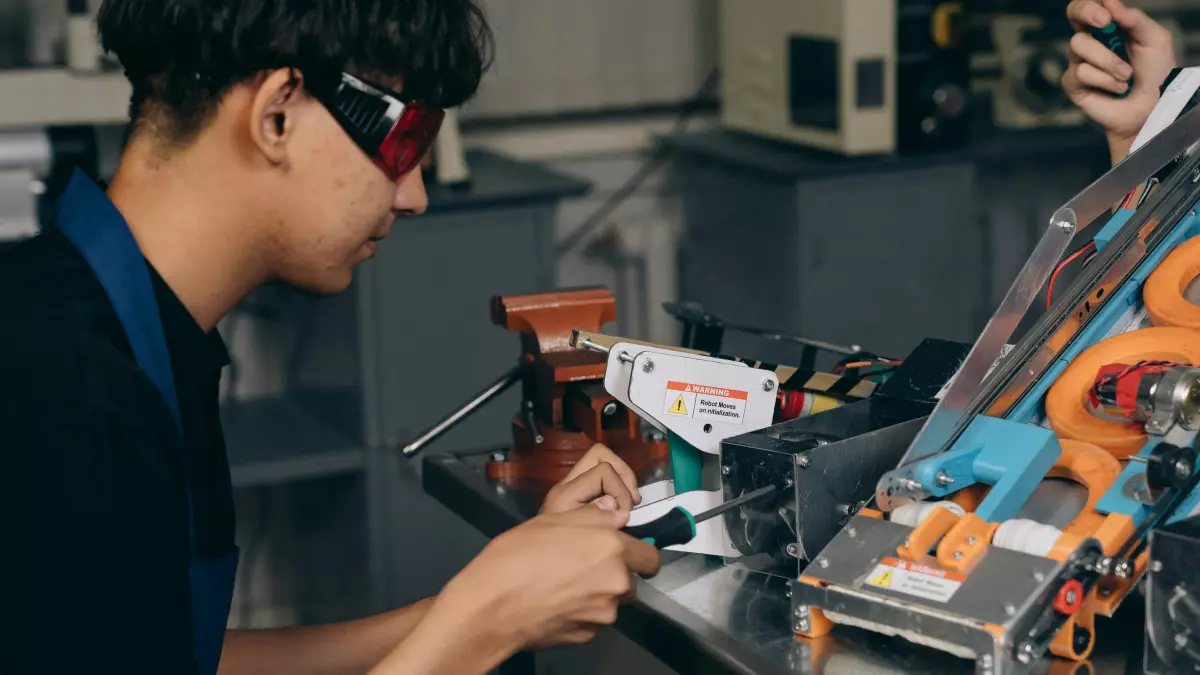Ensemble Power
If you think one machine learning model is enough, think again. The real power lies in numbers, and ensemble learning is here to prove it.

By Liam O'Connor
Let’s start with a mind-blowing fact: according to a study by Kaggle, over 80% of top-performing machine learning models in competitions use some form of ensemble learning. That’s right—if you’re not leveraging this technique, you’re likely leaving performance on the table.
So, what’s the deal with ensemble learning? In simple terms, it’s the process of combining multiple models to make predictions. The idea is that while individual models might have their own strengths and weaknesses, combining them can smooth out the rough edges and lead to better overall performance. Think of it like a group of experts working together—each one brings something unique to the table, and together, they make smarter decisions.
Why Ensemble Learning Works
At its core, ensemble learning is all about reducing variance, bias, or improving predictions. It’s like having a safety net for your model. By combining different models, you can reduce the risk of overfitting (where your model is too specific to your training data) or underfitting (where it’s too general and misses important patterns).
There are two main types of ensemble learning: bagging and boosting. Bagging (short for Bootstrap Aggregating) works by training multiple models on different subsets of the data and then averaging their predictions. The most famous example of bagging is the Random Forest algorithm, which uses multiple decision trees to make predictions.
Boosting, on the other hand, works by training models sequentially, with each new model focusing on the mistakes made by the previous ones. The idea is to “boost” the performance of the model by correcting its errors over time. Popular boosting algorithms include XGBoost, AdaBoost, and LightGBM.
Bagging vs Boosting: The Showdown
Let’s break it down further. Bagging is great for reducing variance. If your model is too sensitive to the training data, bagging can help smooth things out by averaging the predictions of multiple models. This makes it particularly useful for high-variance models like decision trees.
Boosting, on the other hand, is all about reducing bias. If your model is too simple and isn’t capturing the complexity of the data, boosting can help by iteratively improving the model’s performance. However, boosting comes with a caveat—it’s more prone to overfitting, especially if you’re not careful with hyperparameters like learning rate and the number of iterations.
Stacking: The Ultimate Combo
If bagging and boosting aren’t enough for you, there’s another technique that takes ensemble learning to the next level: stacking. Stacking involves training multiple models (often using different algorithms) and then using another model to combine their predictions. The idea is that the second-level model can learn how to best combine the predictions of the first-level models, leading to even better performance.
For example, you could train a Random Forest, a Gradient Boosting Machine, and a Support Vector Machine on your data, and then use a simple linear regression model to combine their predictions. This approach can be incredibly powerful, as it allows you to leverage the strengths of different algorithms.
When to Use Ensemble Learning
Now, you might be wondering: when should I use ensemble learning? The short answer is—almost always. If you’re working on a complex problem with noisy data, ensemble learning can help improve the robustness and accuracy of your model. It’s particularly useful when you’re dealing with high-variance models or when you need to squeeze out every last drop of performance.
However, ensemble learning isn’t a silver bullet. It can be computationally expensive, especially if you’re training multiple models. It’s also worth noting that ensemble methods can be harder to interpret than single models, which can be a drawback if you need to explain your model’s decisions to stakeholders.
Deploying Ensemble Models
Deploying ensemble models can be a bit trickier than deploying a single model, but it’s definitely doable. The key is to make sure that your deployment pipeline can handle the complexity of the ensemble. For example, if you’re using bagging, you’ll need to ensure that your pipeline can handle multiple models and combine their predictions in real-time.
One approach is to use a microservices architecture, where each model in the ensemble is deployed as a separate service. The predictions from each service can then be combined by a central service before being returned to the user. This approach can help ensure that your ensemble model is scalable and easy to maintain.
The Future of Ensemble Learning
As machine learning continues to evolve, ensemble learning is likely to remain a key technique for improving model performance. In fact, we’re already seeing new developments in this area, such as automated ensemble learning systems that can automatically select and combine the best models for a given problem.
In the future, we might even see ensemble learning being used in more creative ways, such as combining models from different domains (e.g., computer vision and natural language processing) to solve complex, multi-modal problems.
So, if you’re not already using ensemble learning in your machine learning projects, now’s the time to start. With the right approach, you can boost your model’s performance and stay ahead of the competition.





